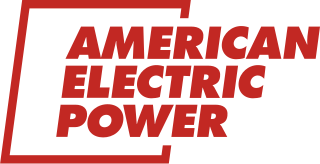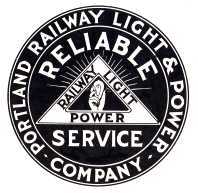
Pacific County is a county located in the U.S. state of Washington. As of the 2010 census, the population was 20,920. Its county seat is South Bend, and its largest city is Raymond. The county was formed by the government of Oregon Territory in February 1851 and is named for the Pacific Ocean.

Port Washington is the county seat of Ozaukee County in the U.S. state of Wisconsin. The population was 11,250 at the 2010 census. The city was named for its natural port, and in honor of first President George Washington. Port Washington contains a post office with the ZIP code of 53074.

Portland General Electric (PGE) is a Fortune 1000 public utility based in Portland, Oregon. It distributes electricity to customers in parts of Multnomah, Clackamas, Marion, Yamhill, Washington, and Polk counties - 44% of the inhabitants of Oregon. Founded in 1888 as the Willamette Falls Electric Company, the company has been an independent company for most of its existence, though was briefly owned by the Houston-based Enron Corporation from 1997 until 2006 when Enron divested itself of PGE during its bankruptcy.
The Potomac Electric Power Company (PEPCO) is a public utility that supplies electric power to the city of Washington, D.C. and to surrounding communities in Maryland. It is owned by Exelon.

Entergy Corporation is a Fortune 500 integrated energy company engaged primarily in electric power production and retail distribution operations in the Deep South of the United States. Entergy is headquartered in New Orleans, Louisiana, and generates and distributes electric power to 2.9 million customers in Arkansas, Louisiana, Mississippi and Texas. Entergy has annual revenues of $11 billion employs more than 13,000 people.

The South Shore Line is an electrically powered interurban commuter rail line operated by the Northern Indiana Commuter Transportation District (NICTD) between Millennium Station in downtown Chicago and the South Bend International Airport in South Bend, Indiana, United States. The name refers to both the physical line and the service operated over that route. The line was built in 1901–08 by predecessors of the Chicago South Shore and South Bend Railroad, which continues to operate freight service. Passenger operation was assumed by the NICTD in 1989.

American Electric Power (AEP) is a major investor-owned electric utility in the United States of America, delivering electricity to more than five million customers in 11 states.

The Illinois Terminal Railroad Company, known as the Illinois Traction System until 1937, was a heavy duty interurban electric railroad with extensive passenger and freight business in central and southern Illinois from 1896 to 1982. When Depression era Illinois Traction was in financial distress and had to reorganize, the Illinois Terminal name was adopted to reflect the line's primary money making role as a freight interchange link to major steam railroads at its terminal ends, Peoria, Danville, and St. Louis. Interurban passenger service slowly was reduced, and it ended in 1956. Freight operation continued but was hobbled by tight street running in some towns requiring very sharp radius turns. In 1956, ITC was absorbed by a consortium of connecting railroads.

The Steel Electric-class ferries became part of the Washington State Ferry System when Puget Sound Navigation Company was acquired in 1951. They were built on San Francisco Bay for service on Southern Pacific and Northwestern Pacific Railroad routes across that bay.
PacifiCorp is an electric power company in the western United States.

Alliant Energy Corporation is a public utility holding company that incorporated in Madison, Wisconsin in 1981. It consists of four subsidiaries:
The Ilwaco Railway and Navigation Company operated a 3 ft narrow gauge railroad that ran for over forty years from the bar of the Columbia River up the Long Beach Peninsula to Nahcotta, Washington, on Willapa Bay. The line ran entirely in Pacific County, Washington, and had no connection to any outside rail line. The railroad had a number of nicknames, including the "Clamshell Railroad" and the "Irregular, Rambling and Never-Get-There Railroad."
The Hagerstown & Frederick Railway, now defunct, was an American railroad of central Maryland built in the 19th and 20th centuries.
Willapa Bay is a large shallow body of water near the Pacific Ocean in southwestern Washington. For a number of years before modern roads were built in Pacific County, Washington, the bay was used as the means of travel around the county, by powered and unpowered craft. This article discusses steamboat navigation on Willapa Bay.

The Portland Railway, Light and Power Company was a railway company and electric power utility in Portland, Oregon, United States, from 1906 until 1924.

General Miles was a steamship constructed in 1882 which served in various coastal areas of the states of Oregon and Washington, as well as British Columbia and the territory of Alaska. It was apparently named after US General Nelson A. Miles.
The MV Willapa was a car ferry that served on the San Francisco Bay and later on Puget Sound. She was one Steel Electric-class ferries built in 1927 for service across the San Francisco Bay. Originally named MV Fresno, she was operated by the Southern Pacific Railroad and provided ferry service across the bay.

Montesano was a steamboat that was operated from 1882 to about 1903 in the coastal regions of Oregon and southwest Washington, including Astoria, Willapa Bay, Grays Harbor, the Chehalis River, Yaquina Bay and Coos Bay. The Montesano of 1882, built in Astoria, should not be confused with another, larger sternwheeler, also named Montesano, built in Cosmopolis, Washington in 1889.

The Electric Bond and Share Company (Ebasco) was organized by General Electric and prior to its breakup was the largest electric power Holding company in the United States. It was forced to divest its holding companies and reorganize due to the passage of the Public Utility Holding Company Act of 1935. Ebasco filed suit against the Act, claiming it was unconstitutional but lost. The U.S. Securities and Exchange Commission would take twenty-five years of legal action to break up Ebasco and the other major U.S. electric holding companies until they conformed with the 1935 act. It was allowed to retain control of its foreign electric power holding company known as the American & Foreign Power Company (A&FP). After its reorganization, it became an investment company, but soon turned into a major designer and engineer of both fossil fuel and nuclear power electric generation facilities. Its involvement in the 1983 financial collapse of the Washington Public Power Supply System's five nuclear reactors led to Ebasco's demise because of the suspension of nuclear power orders and lawsuits that included numerous asbestos claims. The U.S. nuclear industry stopped all construction of new facilities following the 1979 nuclear meltdown at Three Mile Island, going into decline because of radiation safety concerns and major construction cost overruns.















